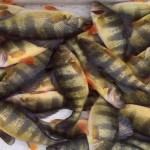
Located throughout North America, small scale fisheries produce high quality, sustainable seafood for local and regional markets. Small scale fisheries are usually undertaken by independent or family businesses. Because most small scale fisheries are seasonal by nature, they are usually fished on a part-time basis. In some areas, fishermen target a variety of small scale fisheries over the course of a fishing season.
Small scale fisheries produce a wide range of products, including fish, shellfish, crustaceans, and other delicacies. Popular catches include striped bass, seatrout, croaker, porgy, flounder, sole, catfish, perch, whitefish, salmon, conch, urchins, quahogs, soft-shelled clams, bay scallops, sea scallops, oysters, shrimp, crabs, lobsters, and crawfish.
Unlike large fishing operations that often fish far out at sea, small scale fisheries are usually conducted in near shore ocean waters, coastal estuaries, rivers, and lakes. Fishermen use specialized gear such a pound nets, fish traps, gillnets, haul seines, and hook and line. Small scale shellfish operations employ small dredges, tongs, rakes, and harvesting by hand. Many of these methods produce high quality, fresh seafood with low environmental impact. Unlike many large scale fisheries, small scale fishermen typically move their catch to market in a matter of hours, which produces the freshest product possible.
Tips for Buying Seafood from Small Scale Fisheries
In many areas, small scale fisheries provide a host of benefits to consumers. Buyers can find these products at local farmers markets, independent seafood markets, and sometimes right off the boat. Seafood wholesalers are another potential source, as many businesses offer fresh, locally sourced seafood at discount prices. When searching these sources, it is a good idea to have a cooler and ice ready.
Related Information